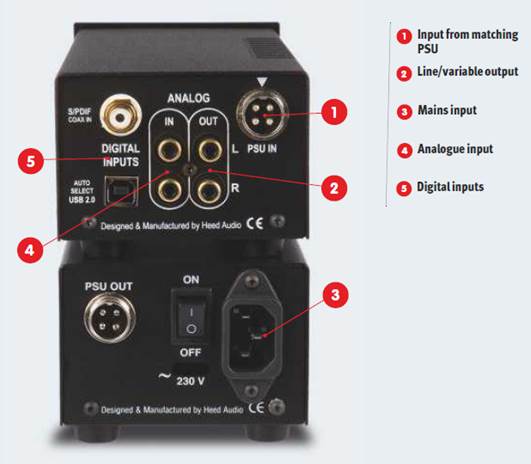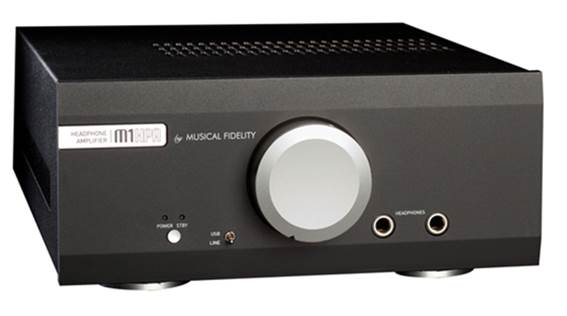It manages to sound controlled and
cohesive without forcing slower, more relaxed material
As a headphone amplifier, the Canalot keeps
most of the same traits that it does via the RCA output. Using a pair of Grado
SR60is and Harmon Kardon BTs, the Canalot shows itself to have plenty of
headroom with both models and presents the same detailed and natural
presentation over headphones as it does as a line-level component. The noise
floor seems usefully low and this allows the Heed’s impressive detail retrieval
to come to the fore. Used exclusively as a headphone amp, the Canalot is
somewhat expensive but the quality of the performance goes some way to
justifying the outlay.

Canalot
is somewhat expensive but the quality of the performance goes some way to
justifying the outlay
Conclusion
The Canalot is a curious device – not quite
one thing or the other and whether it is an ideal product for you will rather
depend on the rest of the system that you want to integrate it into. The
performance over digital is impressive with a sense of life and naturalness
that is enjoyable and easy to listen to for long periods of time. There seems
to be plenty of headroom to drive most headphones to more than acceptable
levels and it is commendably transparent when used via the analogue input.
The problem is that there are single or
combinations of products from rival manufacturers at similar price points that
can mimic the functions of the Canalot and often possess rather greater
flexibility in terms of input and output options.
Many of these other products are rather
more lavishly assembled as well. The Heed can be ordered as a straight, single
input headphone amp for less money, but there are still rival products
available for less that also offer this feature.
Whether the Canalot justifies this price
point will come down to whether you like the distinctive and capable music
performance and don’t have more sources than the Canalot can handle. In a
suitably stripped back system though – especially one with a computer as a
source, this is a product that has a considerable appeal and one that at the
very least warrants a demonstration
In sight
1. Input from matching PSU
2. Line/variable output
3. Mains input
4. Analogue input
5. Digital inputs

In
sight
How it compares!
The Heed isn’t an easy product to draw
direct comparisons to as the feature set is unusual. If you don’t need the
analogue input, Audiolab’s fantastic M-DAC offers more digital inputs and a
well-implemented volume for half the price. Alternatively, the Musical Fidelity
M1 HPA is a very well implemented single input headphone preamp that could be
connected to the matching M1 DAC for less than the Canalot (although this would
use up the single analogue input of the HPA). Alternatively, if you are looking
for a preamp with digital and analogue inputs rather than a headphone output
the Musical Fidelity CLiC is only $225 more (and has 24/192kHz UPnP streaming
thrown into the package).

The
Musical Fidelity M1 HPA
Our verdict
·
Sound quality: 4.5/5
·
Value for money: 4/5
·
Build quality: 3.5/5
·
Features: 4/5
·
Like: Lively and involving sound from all
outputs, excellent USB interface
·
Dislike: Slightly underwhelming build; limited
inputs; not cheap
·
We say: Does what it is designed to do well, but
faces competition from less specialized rivals
·
Overall: 4/5
|
Heed Canalot
specs
·
Origin: UK/Hungary
·
Type: FM/DLNA/ Headphone amp/ preamp/DAC
·
Weight: 1.4kg
·
Dimensions: (W x H x D) 72 x 95 x 25mm
·
Features: Two ¼in headphone outputs; RCA
Output; Optional DAC board with 24/192 kHz USB input; Single analogue line
input; AIFF, WAV, OGG, FLAC and ALAC support
|